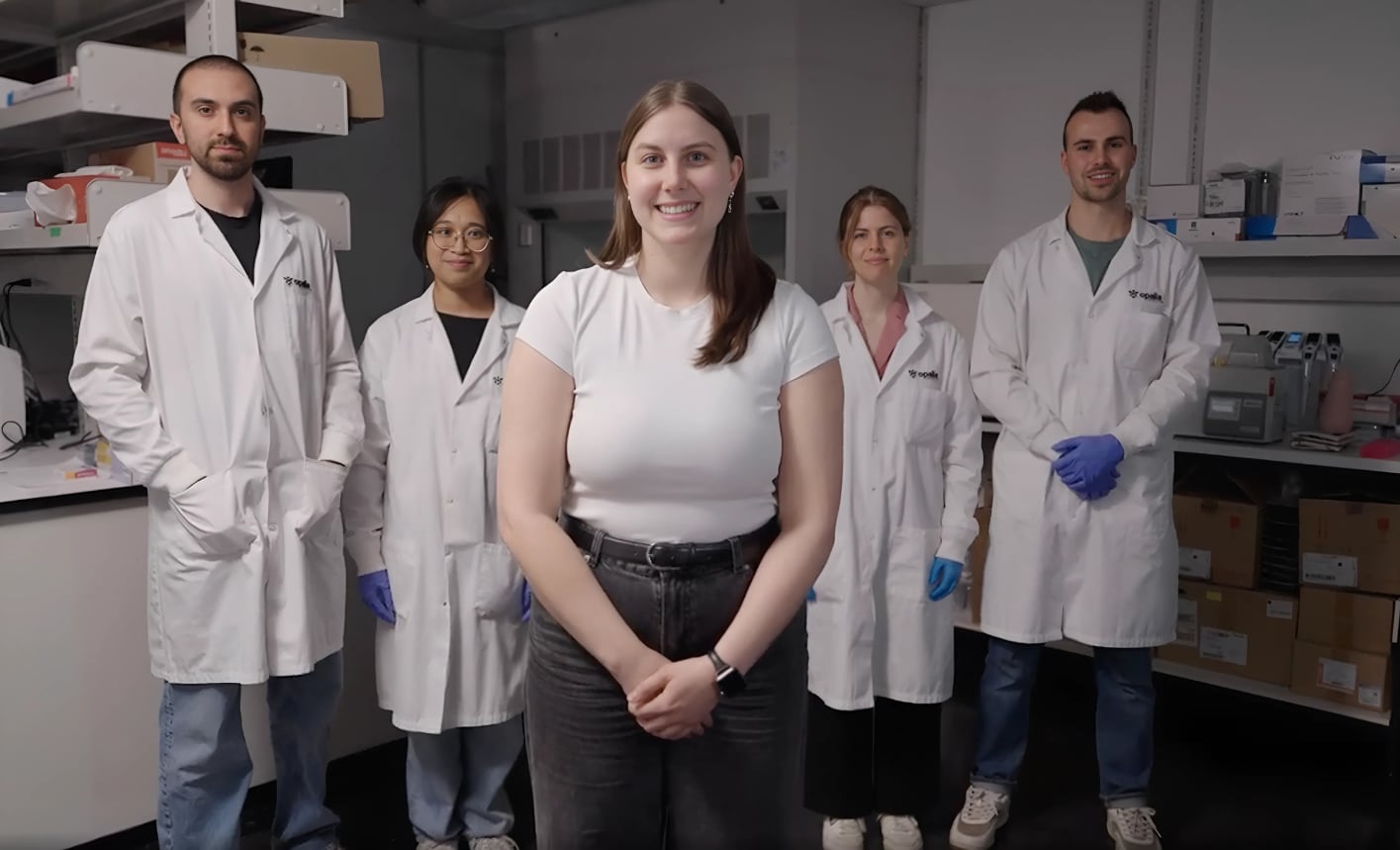Key takeaways
- Opalia is working on commercializing cell-based dairy products like cheese and ice cream without using cows, collaborating with Hoogwegt to scale up their proof of concept.
- The process involves culturing mammary cells and mimicking cow pregnancy conditions, using prolactin to stimulate lactation in a lab environment.
- Opalia claims their method is 65-70% more energy-efficient and has lower greenhouse gas emissions compared to traditional dairy farming, benefiting from Quebec’s hydroelectricity.
- The partnership with Hoogwegt will last until 2027, focusing on testing cell-based milk in various dairy products and preparing for regulatory approval.
In the realms of dairy alternatives, cell-based dairy has made the slowest progress. From poor consumer perceptions to involving an energy-intensive process that has generally deterred investors, industry and governments alike, the technology has remained in the shadow of precision fermentation and hybrid and plant-based dairy alternatives.
Companies like Wilk and Numi have produced milk through cell-culturing, but these efforts have typically focused on infant formula applications rather than food made entirely from cell-cultured milk. Now, Montreal, Canada-based Opalia is hoping to try its hand at producing dairy staples like cheese and ice cream without the cow at a commercial scale.
This is the aim of a two-year commercial partnership with ingredient provider Hoogwegt. The collaboration seeks to scale-up the start-up’s proof of concept and test how Opalia’s cell-based milk performs in a range of dairy products ahead of seeking regulatory approval.
It’s a tall order, but one about which Opalia co-founder Jennifer Cotes is cautiously optimistic.

We asked why her and co-founder Lucas House opted for cell-based dairy and not other production methods. “We wanted originally to go into precision fermentation, but it became really clear to us really early that we wanted to make the whole range of dairy products and not just make single protein,” she told us.
“With the complexity of milk, it could only be fully replicated if we used the cell from the cow to make the whole thing – all of the protein, fat, and lactose. So really early on, we shifted to cell-based milk. It came from a passion of myself and my co-founder for sustainability and just finding better dairy alternative that would taste the same and function the same, but be more sustainable.”
Cell culturing dairy is energy-intensive, however, with companies having to replicate the conditions that lead to milk production in a cow. Opalia’s process doesn’t involve fetal bovine serum (FBS) making it less expensive from the outset; in addition, the patent-pending technology also produces milk that contains all the components of traditional dairy, such as proteins, fats, and sugars.
“To cultivate cells, you just really need basic ingredients: sugars, salts, amino acids, vitamins, minerals,” Cote explained. “You give that to the cells so that they’re able to grow; and then you have to replicate what goes on in the cow’s body during pregnancy and gestation.
“That includes adding proteins into the feed so that it kind of mimics the hormone-signaling that happens during pregnancy, mainly through adding prolactin.
“And then you’re able to get the cells ‘in the mindset’ to lactate and produce all of the milk components that they would in a traditional cow’s body, but in a petri dish instead.
Jennifer Cote, co-founder, Opalia
“So we started from the ground up: cultivating cells, adding prolactin. There was a big learning curve, because the foundational research all had to be done by our team.”
Specifically, Opalia cultures mammary cells – something that ‘nobody thought you could scale’, according to Cote. “There has been some academic research, but as a company, I don’t think there were serious endeavors,” she told us. “Some people had started thinking about it, but more [along the lines of] cultivating human cells for infant formula,” she added.
“Our focus is just to get the process up and running and then decrease our cost [of production] as much as possible. Already we are 65% to 70% more efficient [compared to traditional agriculture] in terms of greenhouse gas emissions and energy, because we have a lot of hydroelectricity here in Quebec.”
The partnership with Hoogwegt is slated to run for the next two years – 2026 and 2027 – with the aim to get compelling evidence of a safe and scalable product to put in front of regulators.
“The project is for R&D purposes,” Cote said. “It’s to use [Hoogwegt’s] expertise in testing dairy products [and] different applications with our cell-based milk so that we can find out how it performs in cheese, ice cream, yogurt – a range of dairy products. And have a list of technical specs for what Opalia milk can do.”
If regulatory clearance is achieved, the next step would be to secure commercial capacity – with Opalia at pre-revenue stage and very much looking for investors to back its business model.
“The next two years are really going to be crucial for the company,” Cote said. “We have to go from bench-scale to an actual pilot volume so we can deliver on the Hoogwegt commercial agreement, but also validate that we’re able to scale it at a competitive price and that we’re able to really deliver on the whole range of dairy products.”
Overcoming regulatory barriers is likely to be tricky, too – cell-based dairy hasn’t been regulated before – but Cote is hopeful. “We’ve seen regulatory approvals for cell-based meat, but cell-based meat is different from cell-based dairy.
“We believe it’s going to be a bit easier to regulate dairy than cell-based meat.”
“From conversation we’ve had with regulators, [in dairy] you don’t eat the cell itself, but a by-product of that cell. The lack of DNA material present in the end-product could make it a bit easier in terms of cell characterization.”
Cote told us a few countries are guiding the regulatory pathway for cell-based products. “The UK has a new regulatory sandbox for cell-cultured foods and Switzerland also has it,” she explained. “Our goal is to be in Europe, but of course, EFSA makes it a little bit difficult because it’s very political.”
As for Canada – which, too, has a very politically-influential dairy industry – Cote says regulators appear to be open to the idea of cell-based dairy. “We’ve had multiple conversations with the regulators and they’re really eager to get access to the dose that we’re going to submit. There is a lot of curiosity. I don’t think we’re going to face any barriers [in Canada] with regulators, specifically.”
Labeling could be more of a challenge, she admitted.
“Labeling is definitely going to be something that we’re going to look at, but I don’t see a problem with being called something other than milk. I think it could be beneficial in our case to make sure we’re separated from the ‘traditional’ source, if I can call it that.
“I think it’s good to have transparency for consumers so that they are not confused, especially when it comes to dairy allergies or other dietary restrictions. But I don’t see any pushback [from the dairy industry] for now.”


